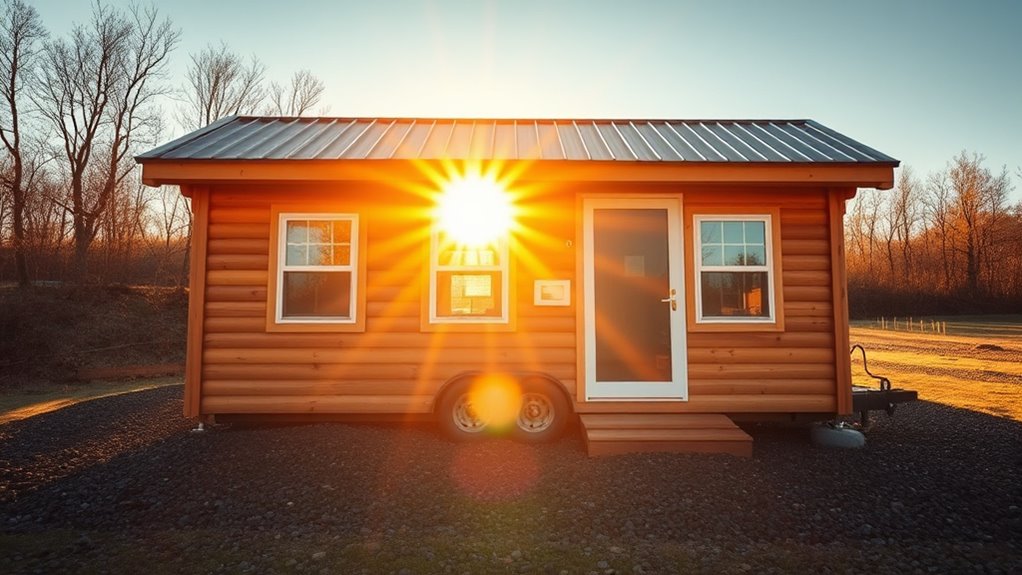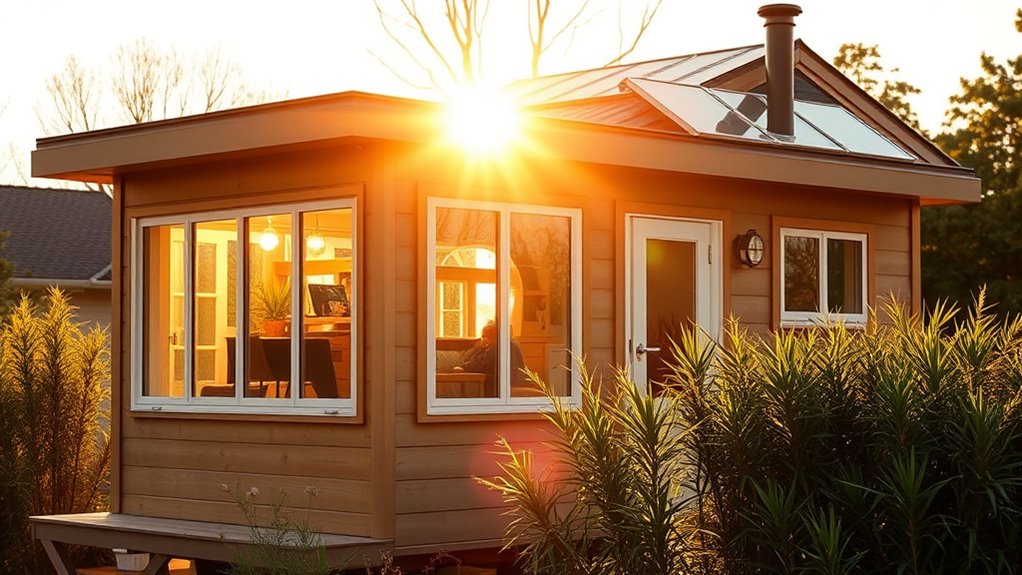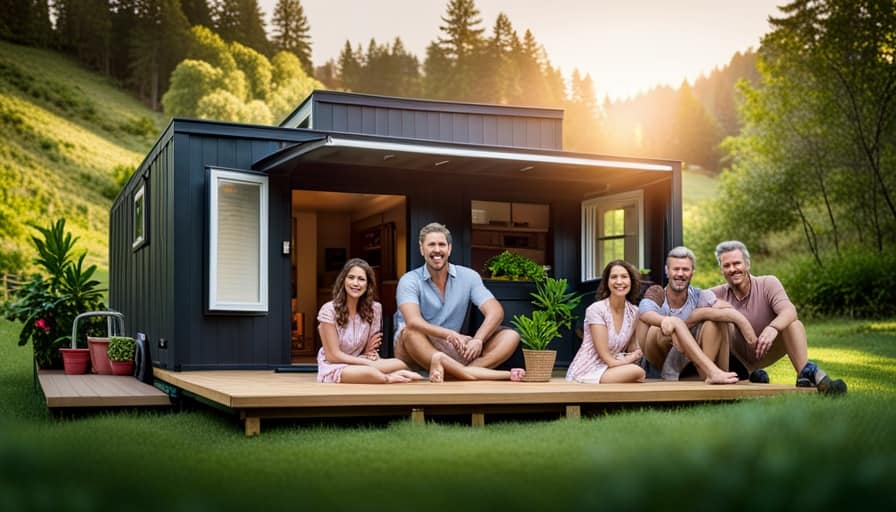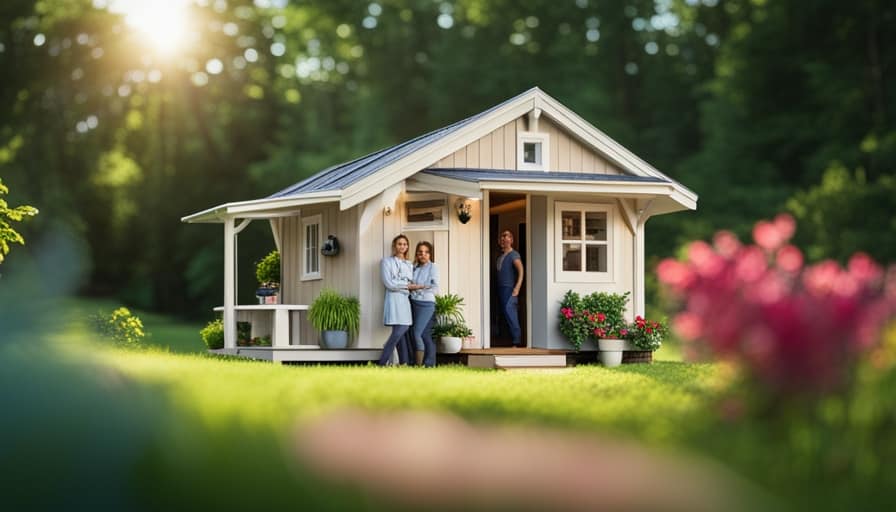Did you know that proper passive solar design can cut heating costs in tiny houses by up to 50%? Small spaces are ideal for harnessing the sun’s energy naturally, but many overlook simple tricks that make a big difference. When you carefully position windows and use thermal mass, you can markedly reduce or even eliminate the need for active heating. Curious how to optimize your tiny home for free warmth?
Key Takeaways
- Install thermal mass materials like concrete or stone along interior walls facing south to absorb and slowly release heat.
- Position large, double-pane windows on the south side to maximize sunlight intake during winter.
- Use overhangs or shading devices to prevent summer overheating while allowing winter sunlight.
- Arrange living areas near sunny windows to benefit from passive solar warmth naturally.
- Incorporate natural ventilation to enhance airflow and regulate indoor temperature without extra energy.

Passive solar tricks offer an easy way to reduce energy bills and make your home more sustainable. One of the most effective strategies involves using thermal mass to store and release heat, helping to keep your tiny house warmer during cold days. Thermal mass materials, like concrete, stone, or even packed earth, absorb sunlight when it shines through your windows. As the sun moves away, these materials release the stored heat slowly, maintaining a comfortable temperature inside. To maximize this effect, you should place thermal mass directly where it can catch the most sunlight—typically along the interior walls facing your main windows. This placement ensures that your thermal mass heats up during the day and cools down gradually at night, reducing the need for additional heating. Incorporating natural ventilation alongside passive solar design can further enhance airflow and temperature regulation in your tiny house.
Another key element is window placement. You want to position your windows thoughtfully to allow maximum sunlight during the winter months when the sun is lower in the sky. Placing larger windows on the south-facing side of your tiny house helps capture that sunlight and direct it inside. Use overhangs or awnings to shade these windows during the summer when the sun is higher, preventing overheating. Proper window placement isn’t just about size and direction; it’s also about orientation. Make sure your windows are unobstructed by trees or structures that could block sunlight. To further improve thermal efficiency, consider installing double-pane or low-emissivity windows, which help insulate your home and trap heat inside.
You should also think about how the interior layout complements window placement. Position your seating and sleeping areas close to sunny windows so you can enjoy the warmth naturally. Keep less-used spaces away from windows to prevent heat loss. Additionally, sealing gaps around your windows and doors minimizes drafts and heat leakage, making your passive solar setup even more effective.
Conclusion
By harnessing the sun’s free warmth through smart design, you can turn your tiny house into a cozy haven without spending a dime. Strategic window placement, thermal mass, and sealing gaps transform your space into a radiant sanctuary that outshines even the warmest summer day. With these passive solar tricks, you’ll create a home so warm and inviting, it’s like having your own personal sunshine trapped inside—truly a miracle of natural comfort.
Hi, I’m Emma. I’m the Editor in Chief of Tiny House 43, a blog all about tiny houses. While tree houses are often associated with childhood, they can be the perfect adult retreat. They offer a cozy space to relax and unwind, surrounded by nature. And since they’re typically built on stilts or raised platforms, they offer stunning views that traditional homes simply can’t match. If you’re looking for a unique and romantic getaway, a tree house tiny house might just be the perfect option.
















